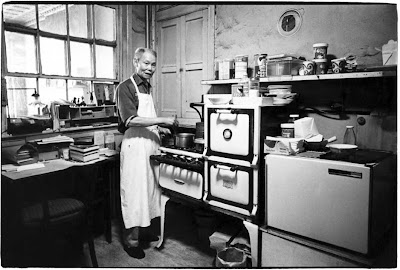Standing in the lamp-lit nineteenth century apartments of 97 Orchard Street, it's easy to see big differences between the past and the present. But frequently, current events echo the histories we explore here at the Tenement Museum. For example, Occupy Wall Street's recent eviction from Zuccotti Park is particularly reminiscent of a moment in history we explore in our "Hard Times" tour (until recently, it was known as "Getting By").
As its name suggests, "Hard Times" focuses on times of economic hardship for Americans. During this tour visitors learn about the struggles of the Gumpertz family, who lived through a national economic calamity known as the Panic of 1873 and its aftermath. During these years, German immigrant shoe-maker Julius Gumpertz and his wife faced tremendous economic and emotional stress--and they were in good company: 25% of New Yorkers were out of work at the time.
Seeking an avenue to express their frustration, and demanding that the government address the problem of unemployment, thousands of workers, many of them German immigrants, gathered in and around Tompkins Square Park on January 13, 1874.
 |
| Protesters in Tompkins Square Park, 1874 |
In an article with the same date, the
New York Times reported that, though the "Police Commission wisely refused permission to the Communists to parade yesterday...by 10 o'clock Tompkins Square and vicinity were occupied by 3,000 persons of the lowest class, most of whom, however, were probably there out of idle curiosity". (1)
Despite the article's dismissive tone, the event made history. Police and protesters clashed, and in the ensuing fray, many were injured and arrested. This sparked a public dialogue about police brutality, free speech, and the right to public assembly, sowing the seeds of the American labor movement.
 |
| The subsequent clash with police; Image Courtesy the Library of Congress |
Two weeks later the
Times quoted Mrs. Charles Lilienthal, who had been an eye-witness to the riot and was "horrified" by the events. Speaking at a community meeting about the January 13 events, Lilienthal contradicted the characterization of the Times' prior article, asking "What citizens were those that wanted to meet in Tompkins Square?...they were a portion of positively our best class of citizens. They were the true tax-payers. They were working men!"(2)
Later in the meeting, according to the article, the group made a series of resolutions denouncing the behavior of the police and asserting their right to peaceful assembly.
As the future of the Occupy Wall Street movement is determined this week, history is both being made and repeated here in New York City.
To read more on this topic, check out the Gotham Center's article,
"Before 'Occupy Wall Street': Notes on prior New York City protests against economic crises".
1. The New York Times, "Defeat of the Communists: Mass Meeting and Parade Broken Up", January 14 1874
2. The New York Times, "Mass Meeting at Cooper Institute", January 31 1874













